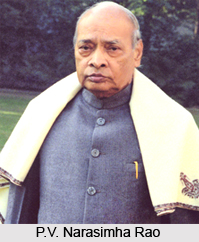 Arunachal Congress was founded in September 1996 as a splinter-group of Indian National Congress. It is a regional political party honing its presence in Arunachal Pradesh. The party was formed as a result of a revolt that took place between the local party leader and Chief Minister Gegong Apang and the then Congress leader P.V. Narasimha Rao. Gegong Apang formed his own party along with other 54 members from the legislative assembly (of a total of 60) of Arunachal Pradesh.
Arunachal Congress was founded in September 1996 as a splinter-group of Indian National Congress. It is a regional political party honing its presence in Arunachal Pradesh. The party was formed as a result of a revolt that took place between the local party leader and Chief Minister Gegong Apang and the then Congress leader P.V. Narasimha Rao. Gegong Apang formed his own party along with other 54 members from the legislative assembly (of a total of 60) of Arunachal Pradesh.
Both the seats of Arunachal Pradesh was won by Arunachal Congress in the Lok Sabha election of 1998. The party fetched 172 496 votes (52.47% of the votes in the state). AC allied with the Bharatiya Janata Party, which was a founding member of the National Democratic Alliance. Gegong Apang`s son was elected from the constituency Arunachal West as a minister in the Central Govt. An inner-party uprising started up soon after the 1998 elections.
Mukut Mithi, an ex-minister deported from the Arunachal Congress, formed his own party, the Arunachal Congress (Mithi). Arunachal Congress (Mithi), gathered 40 members from the legislative assembly and later Mithi formed the government. Before the 1999 Lok Sabha elections Arunachal Congress was in ally with the Bharatiya Janata Party. The political map of Arunachal Pradesh was recharted yet once more before the 2004 Lok Sabha elections. 11 candidates from the party stood in the elections out of which 2 were selected. Arunachal Congress Working Committee (ACWC) is the leadership of the party.




















